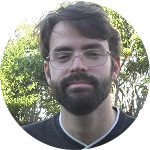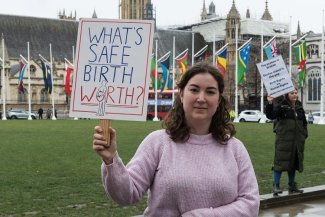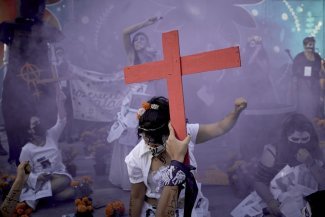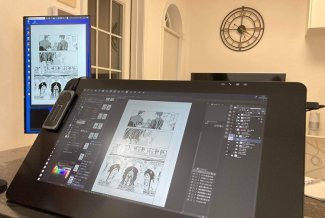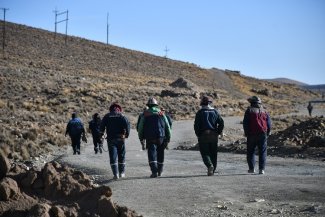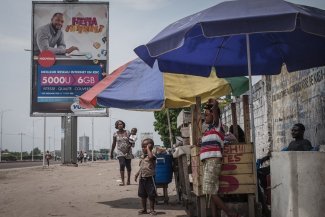The most novel aspect of the protests sweeping the streets of Brazil over recent weeks is the hijacking of the demonstrations’ political direction by segments often referred to as ’right-wing’.
This does not necessarily mean that right-wing parties are infiltrating the marches, much less the kind of radical groups so common in Europe such as xenophobic nationalists or skinheads.
Such elements do exist in Brazil and they are indeed clearly visible at the marches.
But the Brazilian right that is taking to the streets on a massive scale is basically a congregation of ordinary people: professionals, workers and students from poor and rich neighbourhoods, members of the old and the new middle classes, most of them young people who have come into direct contact with politics for the first time through the protests.
They are not so much converts to right-wing ideology, but people who have not invested much time in political discussion over their lives and are not able to see the current situation from a historical perspective.
They are, above all, faithful followers of the views peddled by the traditional media.
There are ample and progressively growing signs of this ’innocent swing to the right’.
One of them is the massive use of the national flag and colours, combined with hostility towards the red of party and trade union flags or those of left-wing social movements.
During the last mass march held in the country’s biggest city, São Paulo, the crowd, opposed to the presence of political organisations at the protest, turned on a group of activists.
Some were left injured, their flags were destroyed and burned, to the cheers and applause of the crowd. In the end, all those carrying any signs of political affiliation had to leave the march under threat of assault.
The greatest irony is that it is precisely these left-wing political groups that initiated the demonstrations against the rise in public transport fares.
The Free Fare Movement (MPL)
This movement took on greater force in Brazil’s major cities following the creation of the Free Fare Movement (MPL) at the Porto Alegre World Social Forum in 2005.
The group emerged out of a national campaign based on the experience of mobilisations previously seen in two cities: Salvador, in 2003, and Florianopolis, in 2004.
In the two cities, demonstrations led by students succeeded in securing a cut in the fares charged on municipal buses.
In São Paulo, the MPL has been fighting for the same cause since it was founded. It had never, however, managed to have any decisive influence on public transport policy, let alone to rally more than 10,000 people and take them on to the streets.
Until two weeks ago, it was always the same story: the price of fares would increase, the MPL would call for demonstrations to oppose it, left-wing parties, student groups, punks, anarchists and certain trade unions would join the protest, around 2,000 people would take to the streets, and end up getting a battering from the police.
A few marches would be organised but, after two or three weeks, interest would wane and nothing would be achieved.
This time it was different.
Public transport fares went up again in São Paulo on 2 June. Four days later, the MPL and its traditional allies took to the streets. There was police repression.
They came out again the following day, in slightly larger numbers. The weekend came and the protests came to a standstill, but were renewed on Tuesday 11 June. They met with repression, yet again.
The role of the media
The mass media, true to form, opposed the action.
The Globo, Brazil’s largest TV network, did what it always does in such instances: showed images of vandalism, suggesting that the protestors were nothing but hoodlums, and praised the police’s response.
The Folha de São Paulo and Estado de São Paulo daily newspapers reacted to the protests with the headlines "Stop! Enough!", and called on the police to take even "tougher" action and to stop the protests from reaching the city’s main avenue, Avenida Paulista, arguing that it could not take any more political action.
The politicians listened and the next time the protestors gathered, on Thursday 13 June, riot police charged at them with brutal force. Over 10,000 people subsequently came out in protest, in what could then be described as the biggest mobilisation ever achieved by the MPL in São Paulo.
Two hundred and thirty two of them were arrested, long before the demonstration had started, which is unconstitutional, and on charges just invented by the authorities: carrying vinegar in their bags to counter the effects of tear gas.
Over a 100 people were injured, including numerous journalists and people who had nothing to do with the protest.
The press and media channels, which had been calling for stronger police action up until the night before, suddenly changed tack.
They did not, however, recognise the true nature of the movement or the political leanings of its members: undeniably left wing and anti-capitalist.
On the contrary, they began massively broadcasting that the protests were not only driven by the rise in public transport fares but widespread dissatisfaction with "the whole situation".
This was true, in part: the demonstrator were fed up of having to pay over the odds for inefficient buses, metros and trains, being caught up for hours in traffic, having to travel without a seat and being packed into vehicles crammed with people.
But the media added its own political slant: corruption, inflation, economic growth and general opposition to left-wing parties - especially the Workers’ Party (PT) of former President Lula and the current president Dilma Rousseff, which has been heading the federal government for ten years.
The result was visible in the march held on Monday 17 June, when more than a 100,000 people took to the streets of São Paulo - along with another 100,000 in Rio de Janeiro, to demand an end to police violence and a cut in public transport fares.
But not just that - suddenly placards appeared with all kinds of demands, many of them reflecting the news and opinions seen in the media over the previous days.
Dissatisfaction with the public spending on the 2014 World Cup – around R$30 billion – was also expressed.
Hostility started to emerge towards the flags of the parties, trade unions and social movements that had been part of the protests since the very beginning. Virtually the only thing tolerated was the yellow and green of the national flag.
The march goes on
The march progressed regardless, drawing greater numbers than ever before in the country’s recent history. The next day, on Tuesday 18 June, hundreds of thousands of people came out on to the streets.
On Wednesday, the mayors of São Paulo, Fernando Haddad, and Rio, Eduardo Paes, and the governors of the states of São Paulo, Geraldo Alckmin, and Rio, Sergio Cabral, lowered public transport fares.
The MPL’s unprecedented victory in the country’s two main cities brought people back out on to the streets on 20 June. People across the country followed suit, taking to the streets in around 120 cities.
The Free Fare Movement had called the demonstration to mark what they considered a "great victory" and to demand the release of the people arrested during the earlier protests, many of whom are faced with trails for crimes they did not commit.
But what emerged, at least in São Paulo, was an event marked by demands that had nothing to do with the original grievances of the MPL and the other groups that had initiated the protests.
The new direction followed the line espoused by the media, dominated by the ethereal issue of corruption.
The placards condemning police violence, seen the previous week, had disappeared, along with those condemning Mayor Haddad and Governor Alckmin, who had ordered the brutal police crackdown.
Gone were the calls for free public transport, the MPL’s key demand. President Rousseff’s government had become the main target, and was even hit with calls for impeachment.
Conservatism was more explicitly expressed, with growing hostility towards grassroots or leftist organisations. Meanwhile, far-right elements circulated freely, draped in the flag of Brazil or the state of São Paulo.
The tables had been so radically turned that the MPL made a public announcement saying it would call for no more demonstrations, to avoid the progress of the conservative line that had been gaining force over the previous few days.
At the same time, around 30 political, social and trade union organisations allied with the left, gathered for an emergency meeting in São Paulo, on the initiative of the Landless Famers Movement (MST), to discuss how to deal with the rise of conservative forces, seen as a threat to the democratic gains of recent years.
Cultural groups from the outskirts of the city also joined forces to tackle the "change in direction" taken by the protests.
One of the concrete outcomes was the demonstration held on 25 June on the outskirts of the city by the Homeless Workers’ Movement (MTST), with the support of the MPL, calling for the demilitarisation of the police, rent capping, better health and education and free public transport.
The situation is evolving at breakneck speed.
"The voices from the streets"
President Rousseff also spoke out. In a ten-minute televised address on Friday 21 June she said that she was "listening to the voices from the streets" and responded to the main grievances that had emerged from the protests.
As with regards to corruption, she said transparency is the best way to combat it, and that is why she had passed the Freedom of Information Act, providing all citizens with access to public information from all federal, state and municipal government bodies.
Addressing the issue of poor public services, she announced a "national pact" with Congress members, judges, mayors and governors, to improve public health and education.
The President defended her plans to bring in foreign doctors to provide public medical care and reiterated her proposal – already defeated in parliament – to invest 100 per cent of the royalties from new oil concessions into education.
She condemned the looting and vandalism of public and private property during the protests and insisted that political parties are essential to democracy and pledged to work for political reform.
Responding to criticism over public spending on the World Cup, she said the government is only lending money to companies and cities to build football stadiums and these funds will be paid back to the state in the future.
As for what will happen next, whether there will be more mass protests, what form they will take, and whether the government will deliver on the pledges made by the President, it is still too soon to tell.
Meanwhile, social networks, especially Facebook, are teeming with new political initiatives and analysis.
There was a supposed call for a general strike on 1 July, which was not backed by the trade union centres; there are calls for military intervention; there are groups wanting to redirect the popular discontent back to its origins – the public transport system, which is run like a business in Brazil rather than being a right enjoyed by its citizens.
There is a bit of everything, but very few certainties. One of the only ones is that the Brazilian people finally seem convinced that political, social and economic change can be achieved by taking to the streets.
What will emerge from this "new awakening", no one dares to predict.


